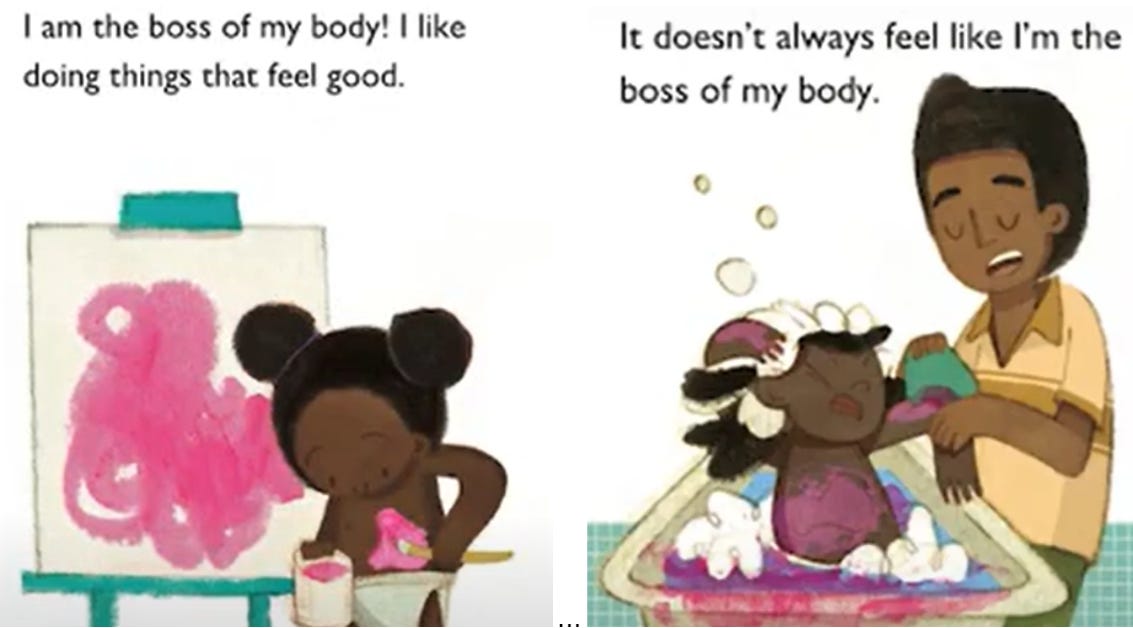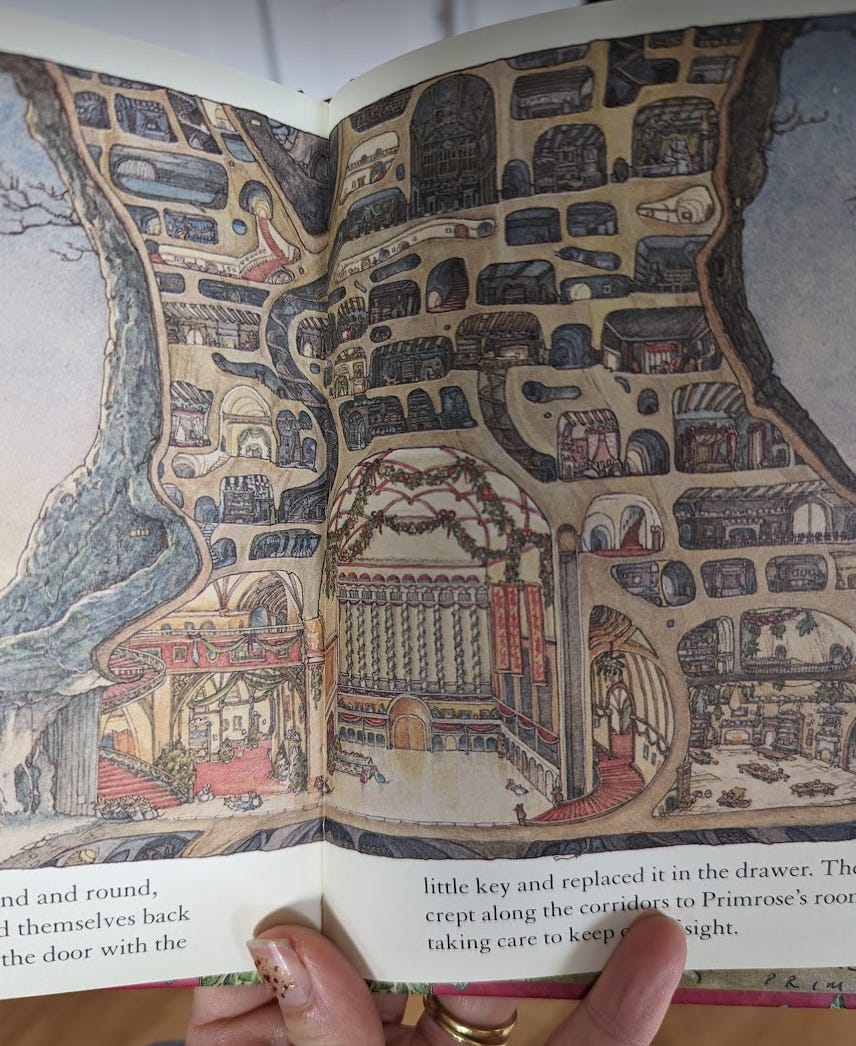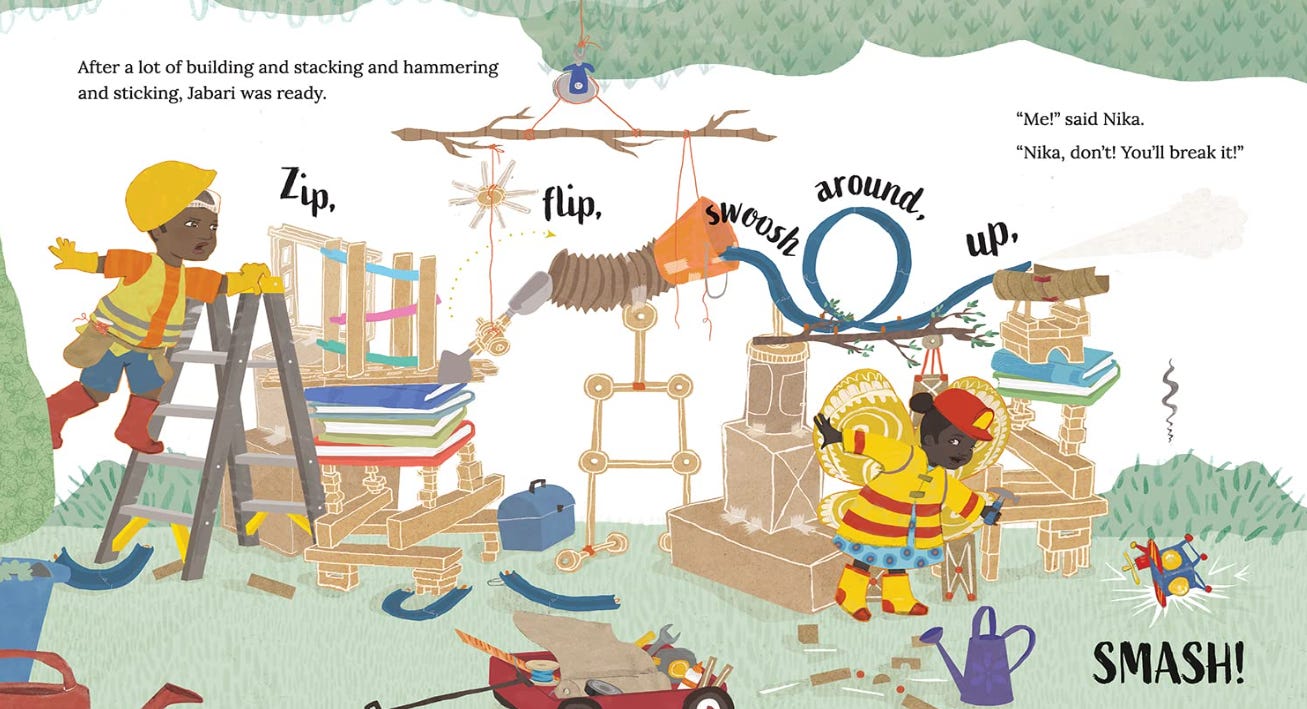This week, I put together a list of children’s books that correspond to the various play types I outlined last week in “What’s Your Play Personality?” Though reading to oneself falls into the category of cognitively active, physically restful “mindful play,” these books feature characters who are playing in various, child-directed ways.
If you’ve been following along the last few weeks, you know I’ve been celebrating the differences in how kids play in an effort to bring light to individual strengths and passions. Maybe just maybe one of my pieces on play schemas, risky play, sensory play, or play types has helped you notice nuance in yourself or your child and released you from some of the nagging feelings of needing to teach your baby or toddler to play or entertain them to keep them busy.
When adults trust the critical role of child-directed play and ensure children have the unstructured time to explore and create freely, they pave the way for raising authentic, self-assured, passionate individuals. This freedom allows children to discover their true selves and leads to grownups who contribute to the world in ways that feel genuine and fulfilling.
The book links below will direct you to my Bookshop.org storefront. If you purchase after clicking the links, I’ll get a small cut and so will whichever independent bookstore you select.
Before launching into the ten specific play types, consider this overarching idea: there are a lot of ways to be “smart.”
All the Ways to be Smart by Davina Bell and Allison Colpoys
“Smart is not just ticks and crosses, smart is building boats from boxes. Painting patterns, wheeling wagons, being mermaids, riding dragons.”
I wish I knew about this book when I was a kindergarten teacher — it makes for a lovely read aloud and would be great for setting an inclusive classroom culture. All the Ways to Be Smart expands the definition of “smart” to include many beautiful ways children show up in this world. I love this book and the worldview it helps me help my children develop. This book is available in hard cover as well as board book versions.
1: Construction Play — The Rabbit Listened by Cori Doerrfeld
The Rabbit Listened by Cori Doerrfeld is worthy of its own post, so I’ll try to keep this brief. Basically what happens is that the protagonist, Taylor, builds a tower, then some crows knock it down, then a series of other animals try to “fix” the problem in a variety of ways, then they leave, pissed, when Taylor isn’t keen on accepting their solutions. Only the rabbit stays and listens as Taylor goes through a cycle of misery: anger, sadness, and, ultimately, repair. “Be the rabbit” is a mantra I repeat to myself sometimes when my children are feeling (and loudly expressing) feelings. I read this book to the adult students in my community college classes because I think the ultimate lesson is geared more toward the caregiver than the child: peaceful, accepting presence goes a long way.
2: Sensory Play — Yes! No!: A First Conversation about Consent by Megan Madison, Jessica Ralli, & Isabel Roxas
“I am the boss of my body! I like doing things that feel good. […] It doesn’t always feel like I’m the boss of my body.”
My three-year old is currently very into sensory play and often asks to paint her whole body, which reminds me of the following two pages from Yes! No!: A First Conversation about Consent by Megan Madison, Jessica Ralli, & Isabel Roxas. This book is one that is enjoyed by both children — for the relatable pictures and messages — and adults — for the helpful how-to paragraphs at the end of the book. I love the First Conversation series and often recommend the books to my play group clients.
You can check out much more information about sensory play in this post, “The Feel of Fun: A Beech Street Guide to Sensory Play” and more information about consent in this story, “Can I push you over again?” about communicative rough and tumble play between siblings.
3: Pretend Play — Harriet Gets Carried Away by Jessie Sima
Harriet gets Carried Away by Jessie Sima is a sweet tale of a child, Harriet, who is preparing for a costume party alongside her dads while dressed up as a casual penguin. It’s funny and nonchalantly inclusive and a great celebration of children’s imaginations.
4: Small World Play — Gemma and the Giant Girl by Sara O’Leary
Sara O’Leary’s Gemma and the Giant Girl is written from the point of view of a dollhouse dweller who is visited by a new, big playmate. This book is one that requires children to shift perspectives to understand what’s going on, something that children who engage in small world play do quite naturally as they incorporate characters into their scenes and narratives.
5: Movement Play — Cannonball by Sacha Cotter
It’s possible that Cannonball by Sacha Cotter would fit better in the “skill mastery” category because the kid in it is trying to perfect the perfect dive, but the main character’s journey toward harnessing confidence, finding their own, unique flare and, ultimately, joyfully expressing themselves through movement landed it here, in the “movement play” category.
6: Expressive play — The Secret Staircase by Jill Barklem
The Secret Staircase is one of those books that I would have absolutely LOVED as a child. There are tiny, intricate pictures of the Brambly Hedge community — cross sections of a palace-like tree and busy stockrooms full of hanging mushroom caps and other tiny treasures. The story is about two young mice who are practicing for a performance but find some adventure along the way. Initially I was going to put this book in the small world category, for obvious reasons, but when I read it with my daughter she was drawn to the performance at the end, which is why it ended up here under “expressive play” — the creation of art such as acting, dancing, singing, and playing instruments.
Note: this book has a lot of text per page — my kindergartener enjoys the whole thing, but I paraphrase when I read it to my toddler.
The book itself is mini, but the small world play is…huge:
7: Game Play — Library Lion by Michelle Knudson
My older kid loves game play — he loves board games, he loves playground group games, he loves creating and playing rule-based math games when we are on road trips (each sign is assigned a certain number of points and we earn them as we pass). But you know what he doesn’t like? When people break rules. The first time I read Library Lion by Michelle Knudson, I knew it’d be a good book to help this kid stretch his understanding of rules. In the book, the lion learns the rules of the library and then, ultimately, overrides those rules to become a hero. I like the message that rules and etiquette can be helpful, but situational judgment and common sense are ultimately more important.
8: Skill Mastery Play — Amy Wu and the Perfect Bao
Amy Wu and the Perfect Bao by Kat Zhang fits well in the “skill mastery” category. As the title suggests, Amy Wu is on a quest to construct the “perfect” bao. Repeatedly defeated, but highly determined, Amy Wu demonstrates resilience as she takes her family’s suggestions about what she should be doing better, but ultimately figures out an innovative way that works for her to create a perfect bao. Skill mastery requires a great deal of resolve and, while this text is likely too abstract for young children to connect to their own lives in any motivating way, models of people failing and continuing to try are helpful for children to develop growth mindsets. There’s a recipe at the back, so if you’ve never made bao before, you can demonstrate for your child how it’s okay (even fun, playful) to be a novice.
9: Exploratory Play — Jabari Tries by Gaia Cornwall
“After a lot of building and stacking and hammering and sticking, Jabari was ready. Zip, flip, swoosh around, up, SMASH.”
Trajectory is one of the many types of exploratory play (which encompasses many different types of hands-on tinkering: see play schemas). In Jabari Tries by Gaia Cornwall, Jabari is attempting to make a flying machine in his backyard. Like Amy Wu, Jabari demonstrates resilient determination as he tries and tries again. In the end, his younger sister, who has been trying to “help” the entire time, inspires Jabari toward success.
10: Mindful Play — Multiple Titles
Mindful play, as I mentioned in the opening, is when children are physically restful, but mentally active. Mindful play involves reading books, observing others, and daydreaming. I personally love elevating daydreaming to play instead of dismissing it as unproductive — lots of important work is done in the quite of one’s own head and I truly think we need more time to “do nothing.” So, here are a three books that celebrate daydreaming:
The Story of Ferdinand by Munro Leaf — an old classic about a bull who is mistakenly chosen to fight in a bull fight in Madrid, but prefers to sit quietly, smelling the flowers.
Quiet! There’s a Canary in the Library by Don Freeman (author of Corduroy) is a story about a child who gets lost in her imagination while sitting *quietly* in the library.
And, again, where we started: All the Ways to Be Smart by Davina Bell which features a whole, colorful spread showcasing someone blissfully at home in their own mind:
If you enjoyed this piece, it’s not the first time I’ve compiled book lists. You can check out “Twelve Titles: A Book-Based Beech Street Gift Guide” where I suggest one narrative and one information book for each age group 0-5, or, if it’s relevant to you, you could check out “Three Books for Siblings that are Not about Siblings.”
















